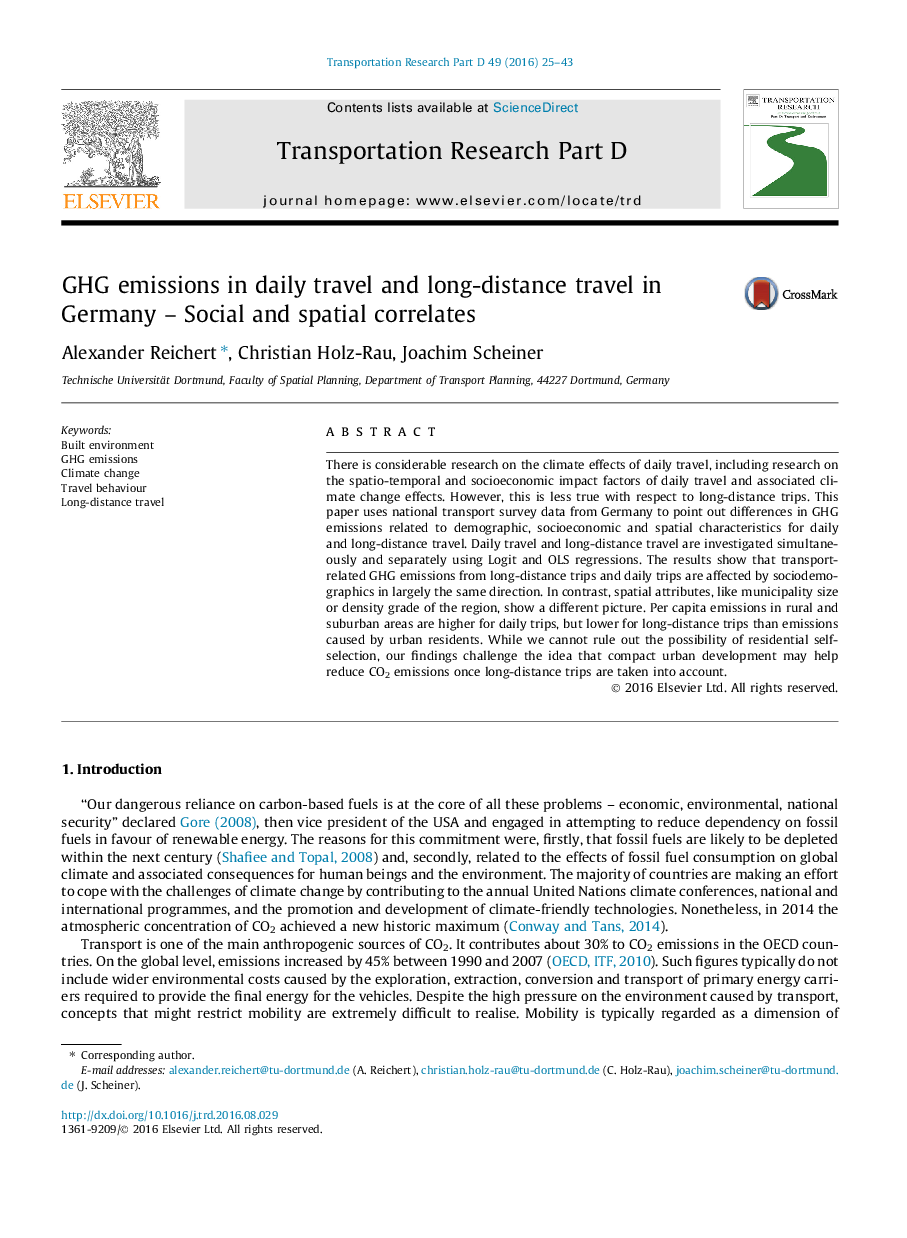| Article ID | Journal | Published Year | Pages | File Type |
|---|---|---|---|---|
| 7499346 | Transportation Research Part D: Transport and Environment | 2016 | 19 Pages |
Abstract
There is considerable research on the climate effects of daily travel, including research on the spatio-temporal and socioeconomic impact factors of daily travel and associated climate change effects. However, this is less true with respect to long-distance trips. This paper uses national transport survey data from Germany to point out differences in GHG emissions related to demographic, socioeconomic and spatial characteristics for daily and long-distance travel. Daily travel and long-distance travel are investigated simultaneously and separately using Logit and OLS regressions. The results show that transport-related GHG emissions from long-distance trips and daily trips are affected by sociodemographics in largely the same direction. In contrast, spatial attributes, like municipality size or density grade of the region, show a different picture. Per capita emissions in rural and suburban areas are higher for daily trips, but lower for long-distance trips than emissions caused by urban residents. While we cannot rule out the possibility of residential self-selection, our findings challenge the idea that compact urban development may help reduce CO2 emissions once long-distance trips are taken into account.
Related Topics
Life Sciences
Environmental Science
Environmental Science (General)
Authors
Alexander Reichert, Christian Holz-Rau, Joachim Scheiner,
